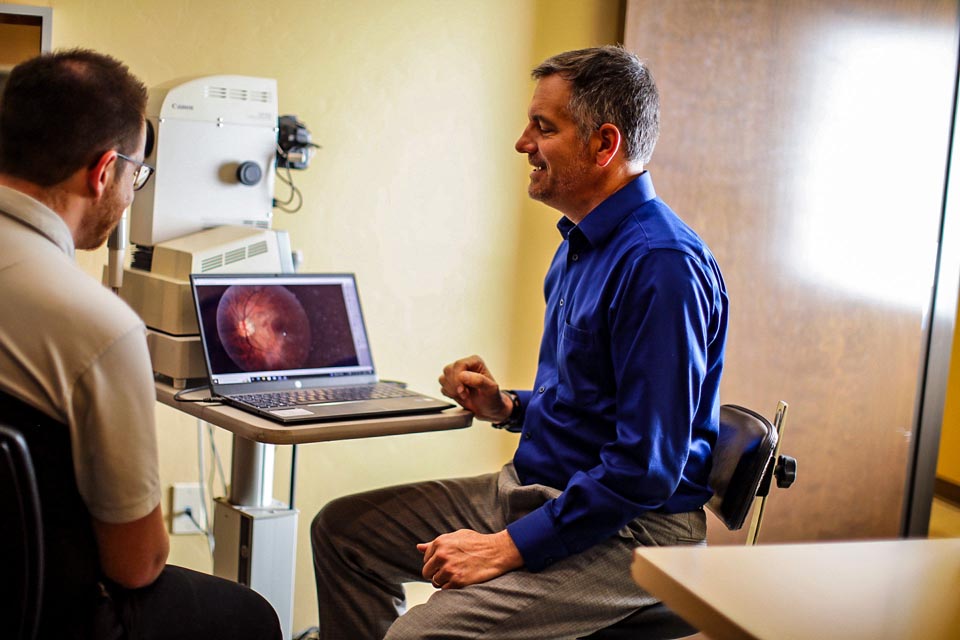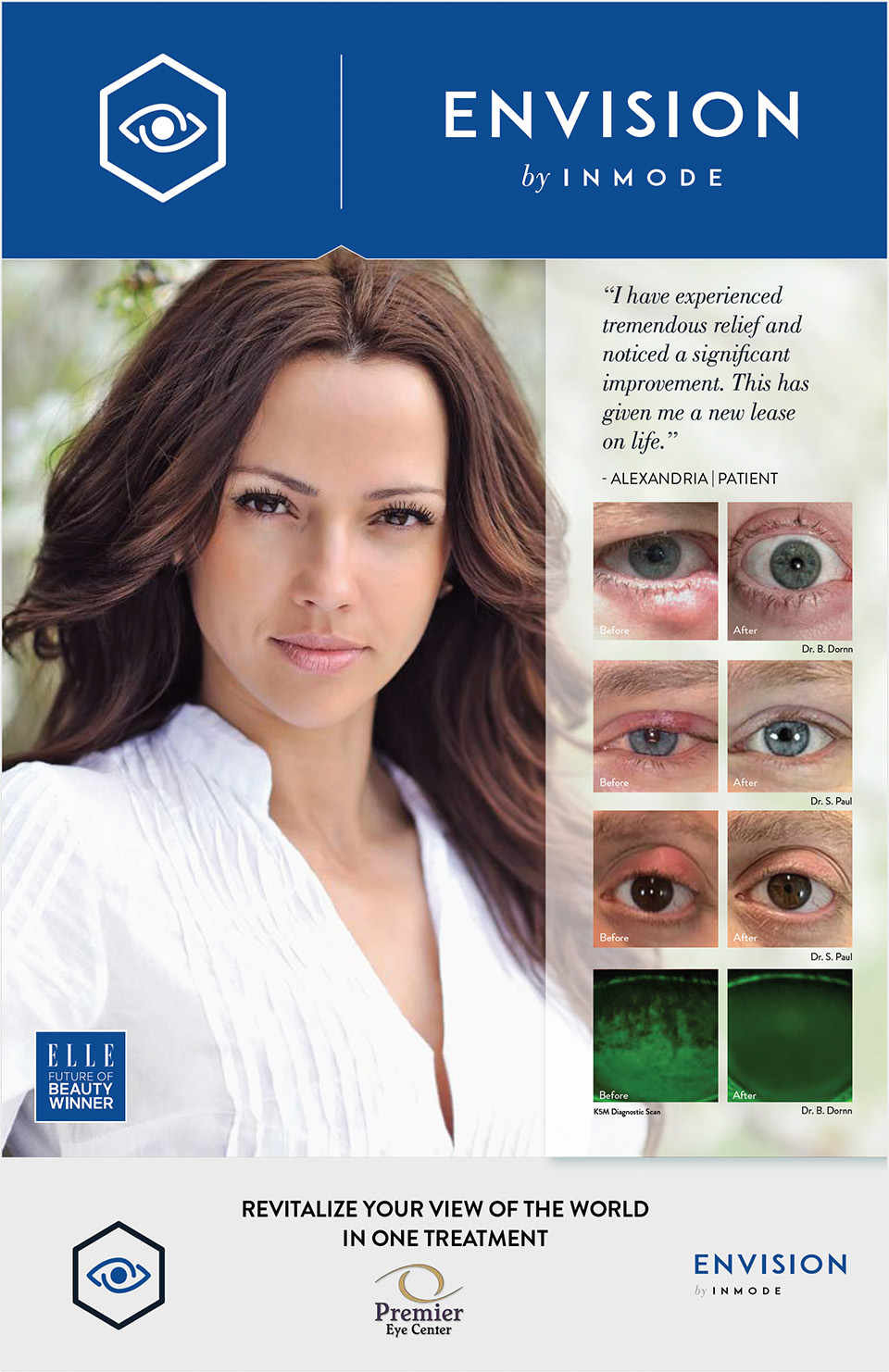Comprehensive Eye Exams
We provide thorough eye exams using the latest technology, but we also take time to listen to your needs and explain your options. Routine vision exams include:
Physical Eye Health Exam
Utilizing medical microscopes and focusing lenses, the external and internal parts of the eyes are examined by our doctors. Your pupils may be dilated with eye drops for some of these tests. We utilize mild dilating drops which work fast and do not last as long as other drops you may have experienced. If your eyes are dilated, we will provide you with disposable sunglasses for the trip home.

Refraction
Refraction is the process of determining your eyeglass prescription. When light rays are not focused perfectly on the retina, this is referred to as refractive error. We perform precise measurements (refraction deals with fractions of millimeters) utilizing several different methods. Instruments used include a computerized auto-refractor, retinoscope and phoropter. A personalized prescription is much more than just, “Which is better one or two?” Our doctors not only perform measurements but also listen to how you use your eyes at work and play to determine your exact prescription needs.
Binocular Vision Testing
God gave us two eyes and vision works best when both eyes work together properly. Clear, single, comfortable vision takes all 12 extraocular muscles working in perfect harmony with the accommodative, or focusing, system. Binocular and accommodative vision problems are most often corrected with prescription glasses or vision therapy.
Tonometry
This is a measure of the fluid pressure inside the eye. An imbalance between the production and drainage of the fluid can put you at risk for glaucoma. We utilize a few different ways to gather this information: 1) a new generation of air puff test that is very gentle and quiet and 2) a device with a blue light that shines at the eye.
Visual Field Test
Every comprehensive exam includes a screening of your peripheral vision with a computerized autoperimeter at no additional fee. You click a hand-held button when you see small lights off to the side. It takes about 90 seconds per eye and can help diagnose or rule out neurological disorders of the visual system in addition to glaucoma.


